12 Gentle Exercises to Relieve Sciatica Pain
Almost everyone who’s experienced sciatica pain remembers those sharp twinges or lasting aches—the kind of discomfort that makes simple movements suddenly feel daunting. Sciatica pain might arise after a long day at your desk, an awkward lift, or seemingly out of the blue. If this journey sounds familiar, you’re in good company: up to 40% of Americans will deal with sciatica at some point in their lives. But here’s some empowering news—gentle, intentional exercise is one of the most effective paths toward lasting relief, and you don’t have to be an athlete to start reaping the benefits. When practiced correctly, certain stretches and strengthening movements can calm irritated nerves, release muscle tension, and create lasting support for your spine and hips. In fact, medical experts and research consistently show that 80–90% of people with disc-related sciatica improve without surgery, often by following evidence-based exercise programs at home. Each body is unique, and progress doesn’t come from pushing through pain—rather, it grows from listening closely to your body and adjusting the pace or movements to match what feels right today. The following 12 effective and gentle exercises are designed to meet a range of needs, whether you’re just starting out or you’re looking for more ways to soothe your symptoms. If you have new or severe pain, experience numbness or weakness, or your symptoms are getting worse, it’s always wise to check in with your healthcare provider. But for most mild-to-moderate cases, these science-backed movements can be the nurturing, empowering support your body’s been craving. Ready to move with kindness? Let’s get started.
1. Knee-to-Chest Stretch
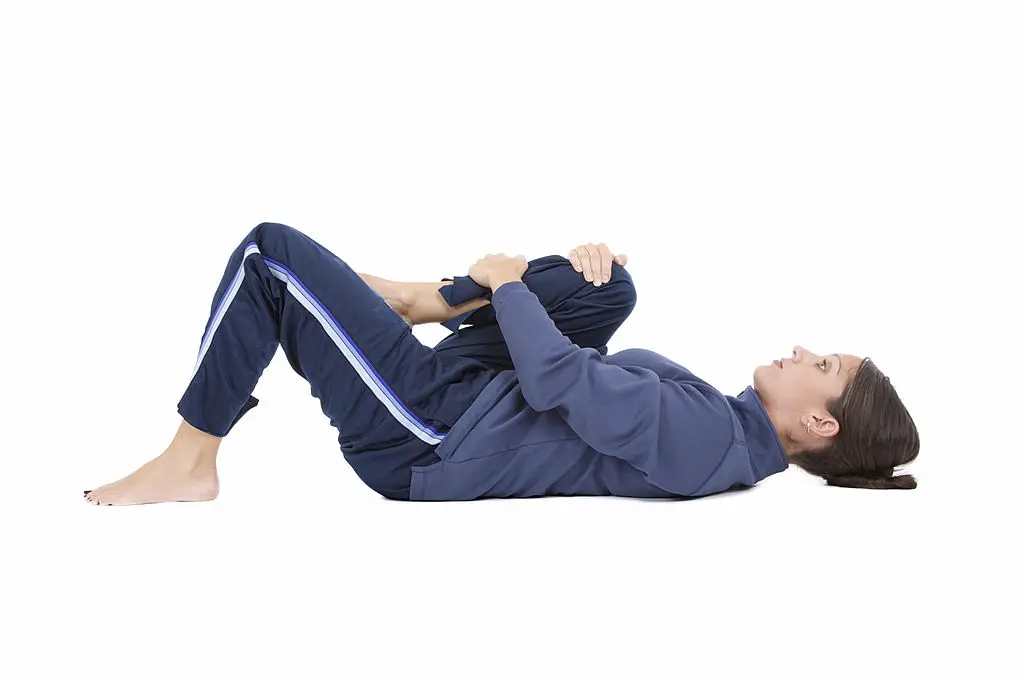
The knee-to-chest stretch is a gentle way to ease lower back and hip tension—two areas that often contribute to sciatica pain. Begin by lying flat on your back, knees bent and feet resting on the floor. Slowly bring one knee up toward your chest, carefully guiding it with your hands. Hold for 15–30 seconds, breathing deeply and noticing any release in your glutes or lower back. Lower that leg back down and repeat on the other side. If you prefer, this stretch can also be performed with both knees hugged in at once for a broader stretch. For those with stiffer backs or limited flexibility, try looping a towel behind your thigh for added support. The key is to move slowly and never force the stretch—your comfort is the goal, not touching your nose to your knee. This stretch helps decompress the lower lumbar area, gently opening space for the sciatic nerve. Practice once or twice daily for best results, or any time you feel tight after sitting.
2. Figure-4 Piriformis Stretch
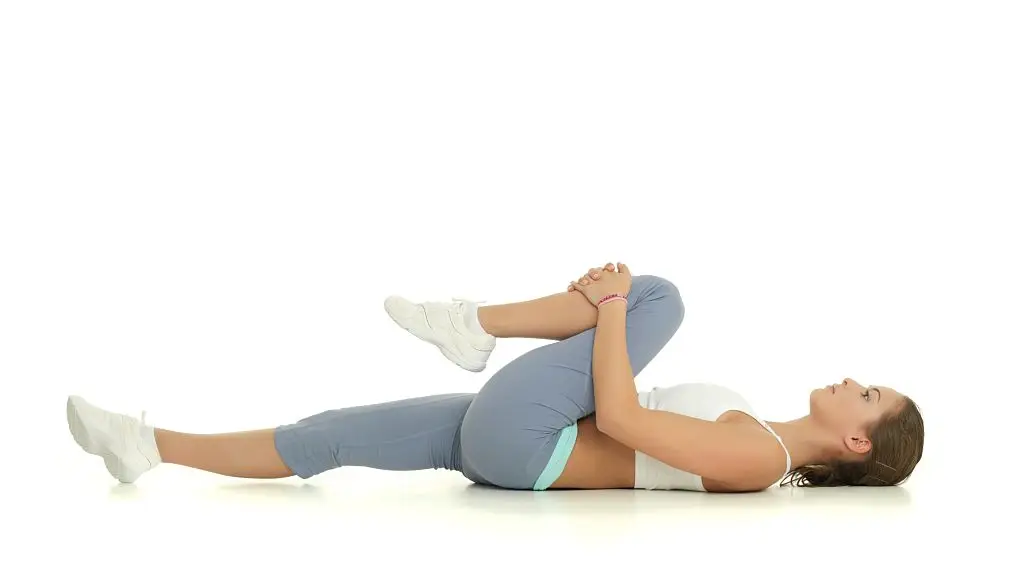
Many people don’t realize that tightness in the small, deep piriformis muscle can pinch the sciatic nerve, intensifying symptoms. To try the figure-4 stretch, start by lying on your back with knees bent. Cross your right ankle over your left knee, forming the shape of a “4.” Gently thread your hands behind your left thigh and draw your leg toward your chest until you feel a stretch in your right hip or buttock. Hold for 20–30 seconds, then switch sides. If direct lifting is uncomfortable, a yoga strap or towel can make it even more accessible. Remember, this isn’t about pulling forcefully—let your breath guide you and back off at the first sign of discomfort. Practice the stretch daily to help relax the piriformis muscle, provide relief from nerve tension, and reduce flare-ups. This is a favorite among physical therapists for its targeted, gentle support.
3. Seated Spinal Twist
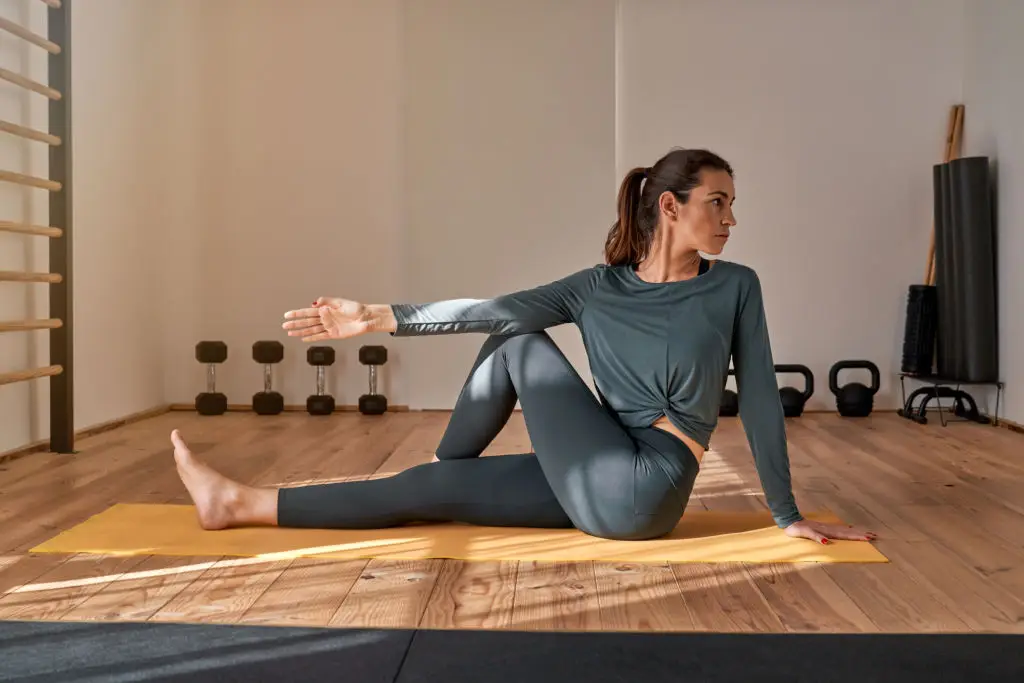
The seated spinal twist enhances flexibility and relieves tension that can radiate down the lower back and glutes. To practice, sit upright on the floor with both legs extended. Cross your right foot over your left thigh, keeping your left leg straight. Place your right hand on the floor behind you for support, and gently twist your torso toward your right knee. The left arm can rest across the right knee or hug it for a deeper stretch. Hold the position for 15–30 seconds, feeling the release along your spine and hip. Repeat on the other side. If floor-seated movements are a challenge, this twist can also be done from a sturdy chair—sit up tall, cross one leg over the other, and gently rotate toward the raised knee. Spinal twists should always feel gentle and controlled; there’s no need to force supplemental movement. Incorporate this as part of your daily routine to foster better mobility and calm sciatic nerve irritation.
4. Child’s Pose
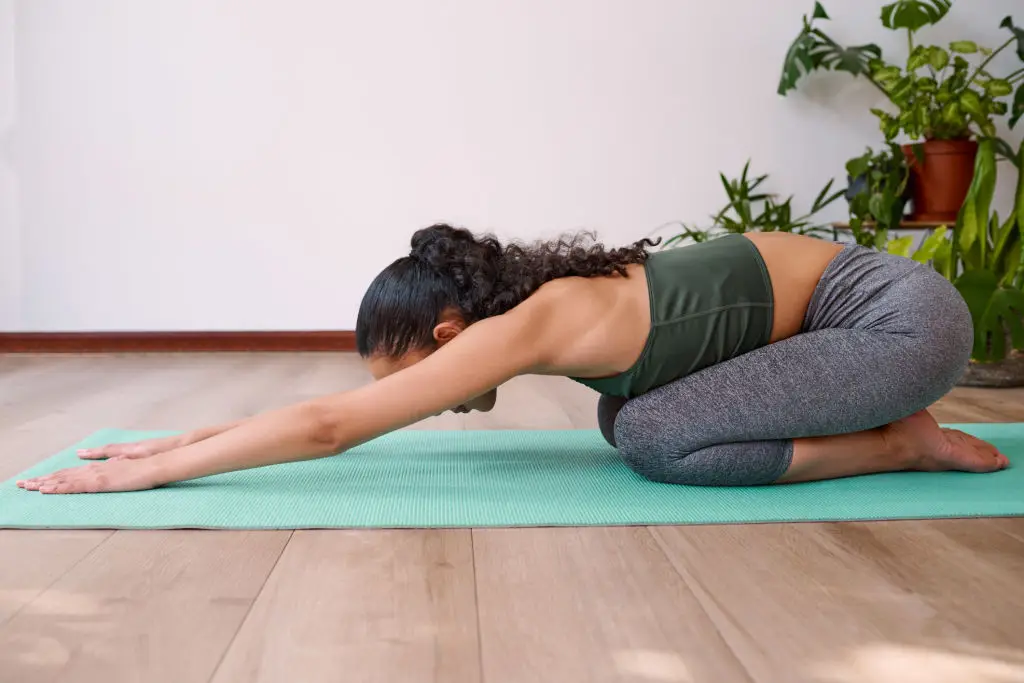
Child’s Pose is a resting, nurturing yoga position that provides gentle decompression of the lower back and pelvic muscles. Kneel on a soft surface, big toes together, and knees apart for comfort. Sink your hips back toward your heels, letting your torso drape forward and your forehead rest on the floor or a block. Arms can extend forward or relax by your sides, whichever feels more restful. Focus your breath into your back, allowing each exhale to soften muscles around your spine. Modifications are easy: Place a cushion under your knees or forehead, or keep your knees closer together if it’s more comfortable. Hold for up to a minute, practicing slow breathing. This pose helps relax the lower back, stretches the hips, and offers a quiet moment to tune in to your body’s needs. Many find it to be an emotional reset as well as physical relief—a reminder that true healing respects both body and mind.
5. Glute Bridges
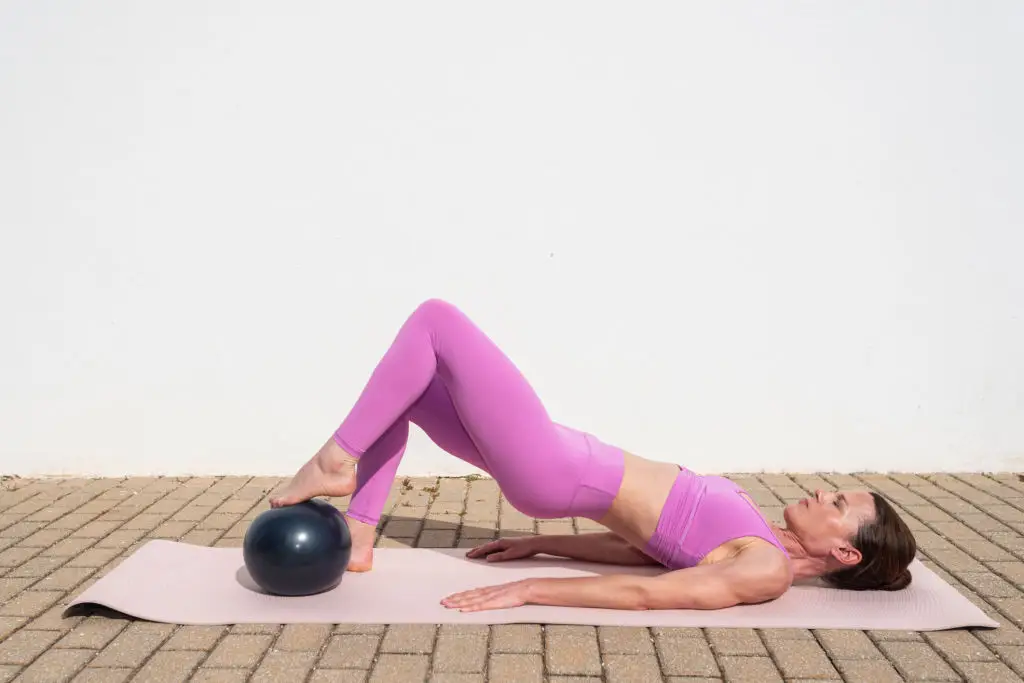
Building strength in the glutes and hips is one of the best ways to support the lower back and take pressure off the sciatic nerve. The glute bridge is simple but powerful: Lie on your back with knees bent and feet hip-width apart. Press down through your heels and slowly lift your hips toward the ceiling, engaging your glutes and hamstrings. Hold for two seconds at the top, then lower with control. Aim for 8–15 repetitions, resting as needed. Beginners or anyone with weakness can make the movement smaller—just raising the hips a few inches is enough to activate support muscles. To increase the challenge, try lifting one foot off the floor and bridging one leg at a time. Focus on alignment rather than height. Not only will glute bridges help relieve current sciatic discomfort, they’ll build supportive strength for daily activities and may help reduce future flare-ups.
6. Standing Hamstring Stretch

Tight hamstrings can pull on the pelvis and lower back, increasing sciatic tension. The standing hamstring stretch directly addresses this, and you can do it almost anywhere. Stand upright with feet hip-width apart. Rest your right heel on a low stool or step, keeping your leg straight but not locked. With a gentle bend in your supporting leg, slowly hinge forward from your hips until you feel a moderate stretch along the back of your thigh. Hold for 20–30 seconds, keeping your spine long and shoulders relaxed. Switch sides and repeat. If reaching this position is tricky, a higher support or lower lift is perfectly fine. For balance, place a hand on a wall or chair. Never force the stretch or bounce—gentle, steady movement does more for long-term flexibility than pushing hard. This stretch can become part of your post-walk or post-sitting routine, breaking up tension and encouraging easier movement.
7. Cat-Cow Stretches

Cat-cow stretches offer a gentle, rhythmic way to improve spinal flexibility and keep the lower back mobile. Begin on hands and knees, with wrists under shoulders and knees under hips. Inhale as you drop your belly toward the floor, lifting your tailbone and head (the “cow” position). Exhale as you round your back, tucking your chin and tailbone under (“cat” position). Flow between these shapes for 5–10 slow repetitions, moving with your breath. This stretch helps lubricate the spine and relieves tension commonly linked to sciatica. If pressure on wrists or knees is uncomfortable, fold a towel or blanket underneath or explore a seated adaptation. Focus on making the motions smooth and pain-free. Cat-cow stretches are a favorite among physical therapists because they gently encourage movement without strain, supporting both immediate relief and long-term mobility.
8. Clamshells
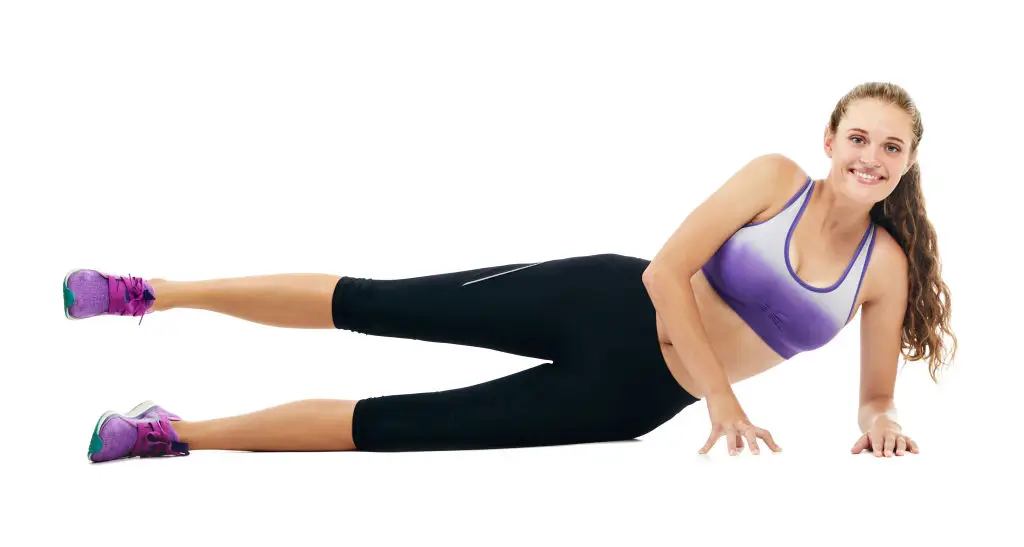
Clamshell exercises are an excellent way to strengthen the muscles that stabilize your hips and pelvis—essential for easing sciatica symptoms and preventing future discomfort. Lie on your side, knees bent and legs stacked. Rest your head comfortably. Keeping your feet touching, lift your top knee as high as comfortable while keeping your hips steady. Lower the knee slowly. Repeat 10–15 times per side, pausing to reset as needed. If this movement feels too difficult at first, start with smaller lifts or add a pillow under your ribcage for support. For extra challenge, use a resistance band just above your knees. The clamshell wake-ups the gluteus medius muscle, an often overlooked source of sciatic pain relief. Strong side-hip muscles can help you walk, climb stairs, and even stand with less pressure on sensitive nerves.
9. Bird Dog
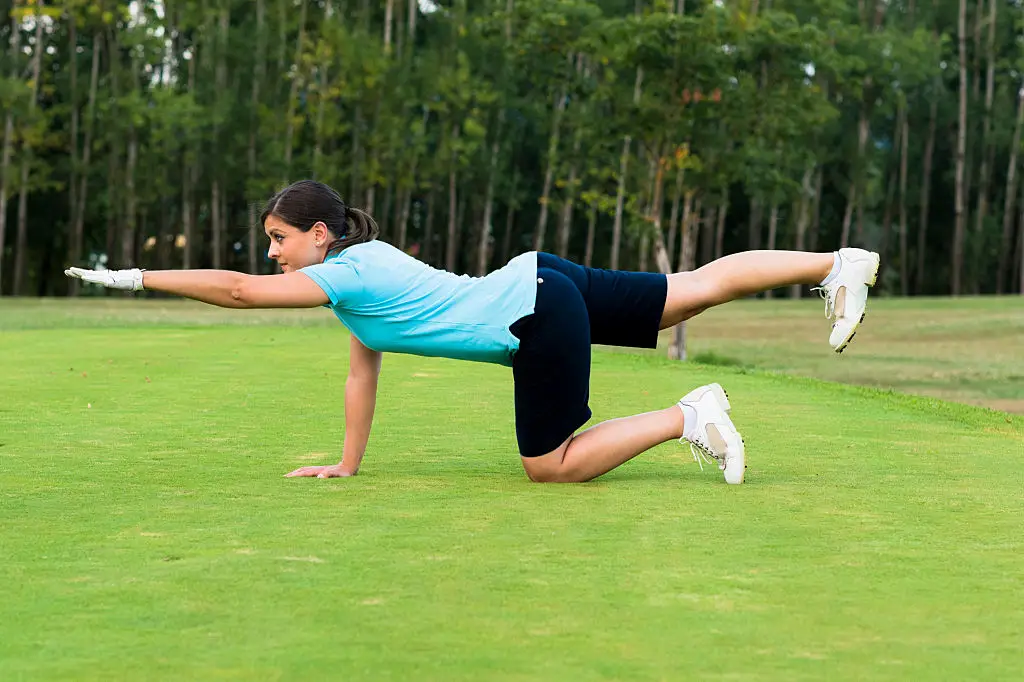
The bird dog exercise combines core and hip strengthening with a focus on controlled movement and balance. Start on your hands and knees, ensuring hips are over knees and hands beneath shoulders. Slowly extend your right arm forward and your left leg straight back, keeping your back flat and abdominal muscles engaged. Hold for a breath, then return to center and repeat on the opposite side. Aim for 8 repetitions each side. If balance is a concern, try extending just your arm or leg while keeping the other grounded. It’s not about reaching higher or farther—it’s about moving steadily and with intention. Bird dog builds deep abdominal and lower back support, increasing your body’s resilience against sciatica triggers. Maintain focus on steady breath and proper alignment for the most benefit.
10. Prone Press-Up ("Cobra" Extension)
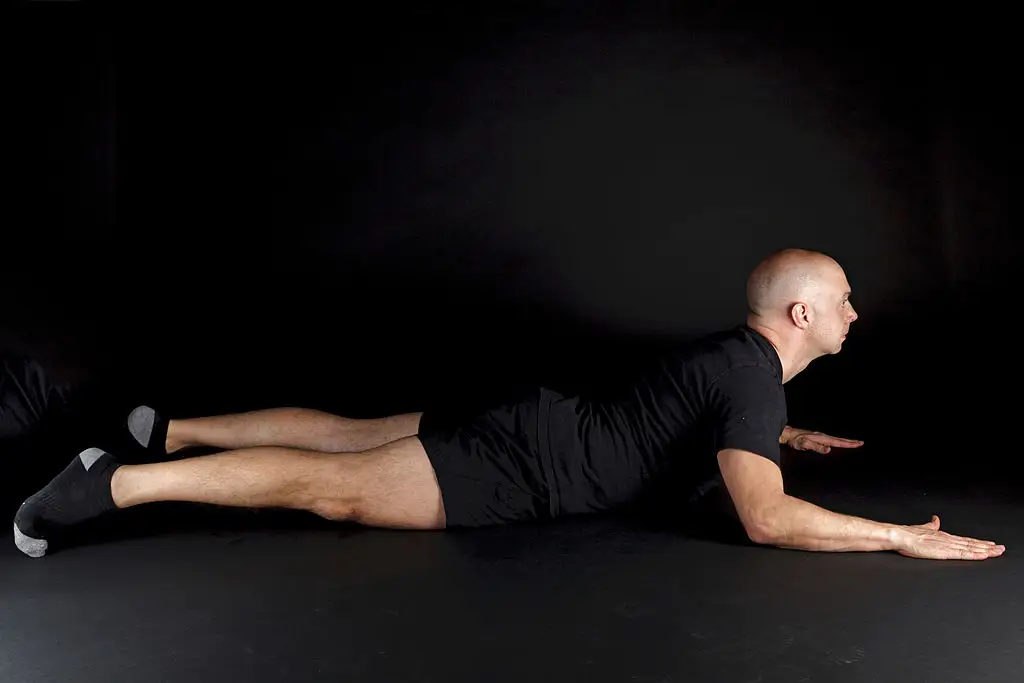
This gentle extension exercise—often called a prone press-up or cobra extension—draws from the McKenzie method, known for helping relieve some types of sciatic pain. Begin by lying on your stomach, hands beneath your shoulders. Gently press your upper body off the floor, keeping hips and legs grounded, until you feel a mild stretch in your lower back. Hold for a few seconds, then lower down. Gradually work up to 8–10 repetitions, resting between sets. If you feel pain radiating farther down your leg, back off and consult a healthcare provider before resuming. For stiff backs or limited mobility, begin by resting on elbows rather than straightening arms fully. The goal is subtle extension—not maximizing height or forcing the spine. Many people notice their pain “centralizes,” or moves away from the leg, after gentle practice of this movement.
11. Seated Sciatic Nerve Glide
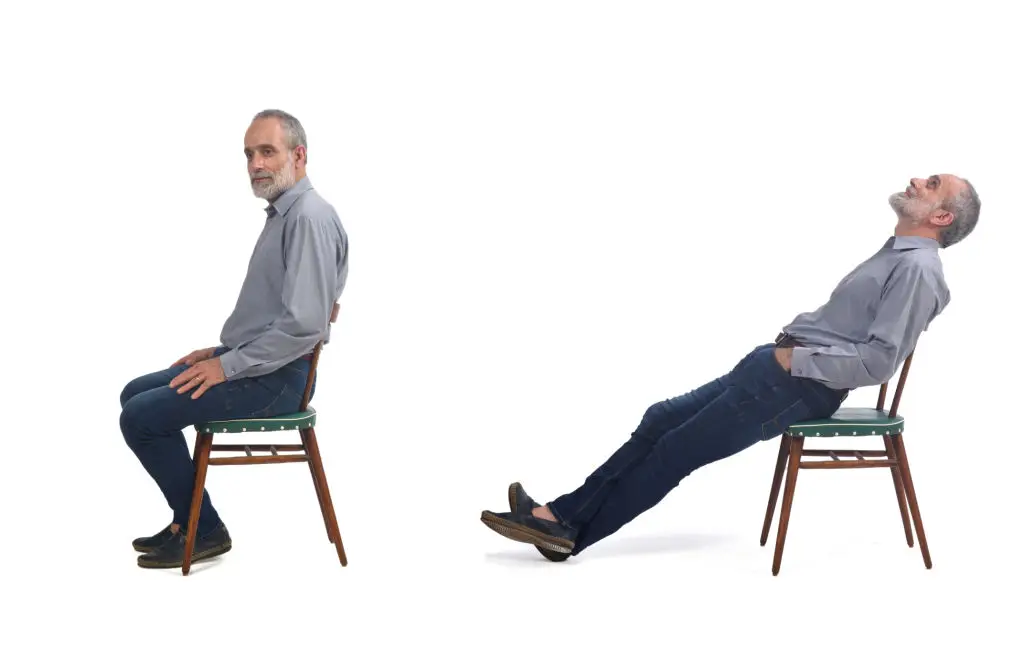
Nerve gliding exercises can play a vital role in restoring healthy movement and easing sciatic nerve irritability. For the seated sciatic nerve glide, sit comfortably with both feet flat on the floor. Straighten one knee out in front of you, keeping your heel on the floor and gently flexing your foot upward. At the same time, tilt your head forward toward your chest. Return to starting position, and repeat on the other side. Move slowly and stop if you feel sharp pain. This technique keeps the sciatic nerve moving freely within its channel, which helps reduce adhesions and triggers for pain. Try 8–10 repetitions for each leg, once daily. If you’re unsure, a physical therapist can help adjust the movement for your comfort. This exercise is especially valuable for those prone to nerve “stuckness” after long periods of sitting.
12. Supine Sciatic Nerve Tensioner
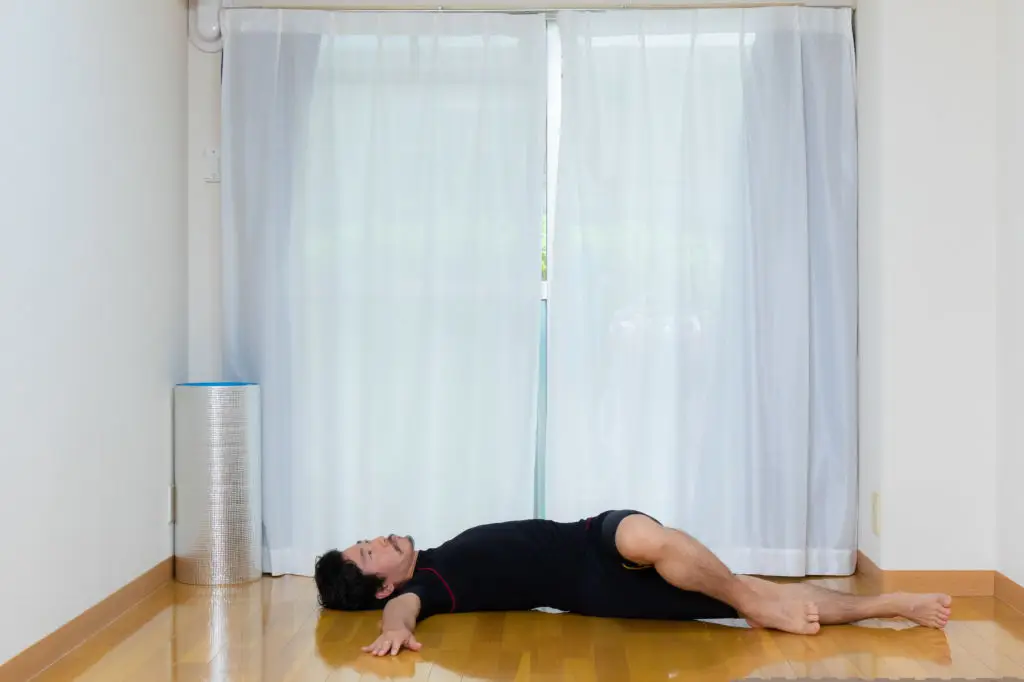
The supine sciatic nerve tensioner offers a gentle approach to mobilizing the nerve, especially helpful on days when pain is less intense. Lie on your back with one leg extended and the other bent. Lift the straight leg slightly, keeping the knee straight, and slowly flex and point your foot several times. Alternate between holding the foot flexed and relaxed for 3–5 seconds each. Repeat up to 10 times per side. You may want to use a towel under your calf for support. Avoid pushing through sharp pain or tingling—less is more when working directly with nerve tissue. Over time, these controlled, modest movements can promote lasting flexibility and minimize nerve sensitivity. Always listen to your body and take a break if discomfort increases. This exercise is best practiced as part of a broader, gentle program, not in isolation or during strong flare-ups.
Embracing Your Sciatica Relief Journey
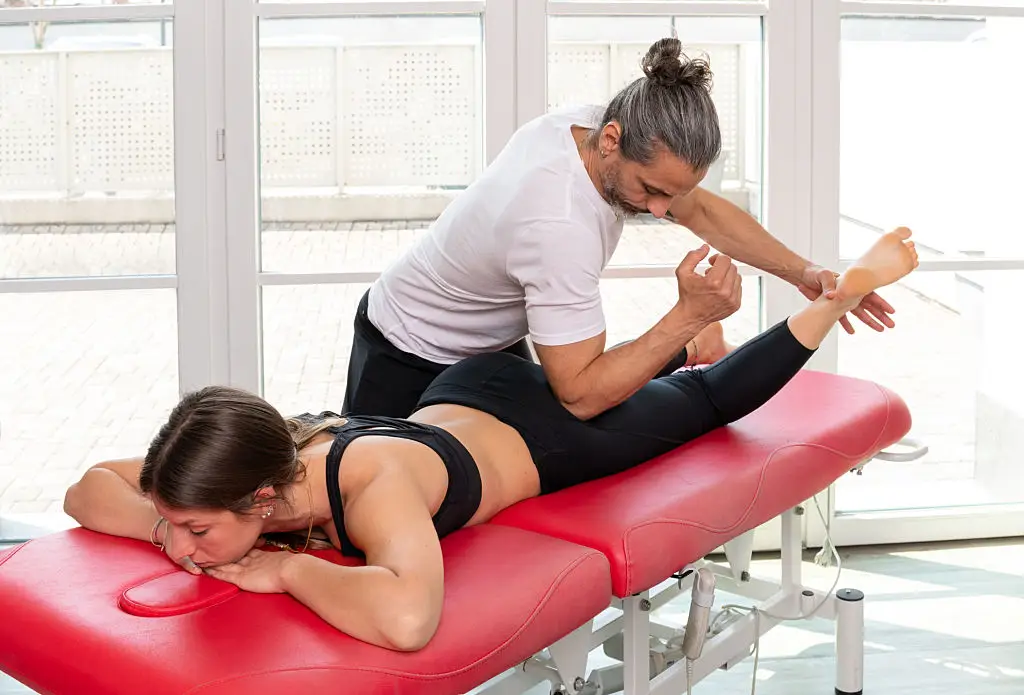
Sciatica pain can be discouraging, especially on days when small movements feel surprisingly challenging—but know that your commitment to gentle, mindful exercise is an act of self-care worth celebrating. The most profound changes often begin not with the biggest leaps, but with the smallest, most consistent steps forward. Recognize each stretch, each mindful pause, and each repetition as a way you’re rebuilding strength, confidence, and comfort in your body’s abilities. It’s normal for relief to come in waves rather than all at once. Some days, a gentle child’s pose may be enough; other days, you might notice yourself standing a little taller or moving a little more freely. If symptoms ever progress, or if you notice changes like numbness, leg weakness, or worsening pain, reach out promptly to a healthcare provider for support tailored to your needs. With patience, persistence, and kindness (both to yourself and your body), these gentle exercises, coupled with awareness and professional guidance, can make your sciatica recovery journey both effective and empowering. Here’s to feeling stronger and more comfortable, one nurturing movement at a time.
